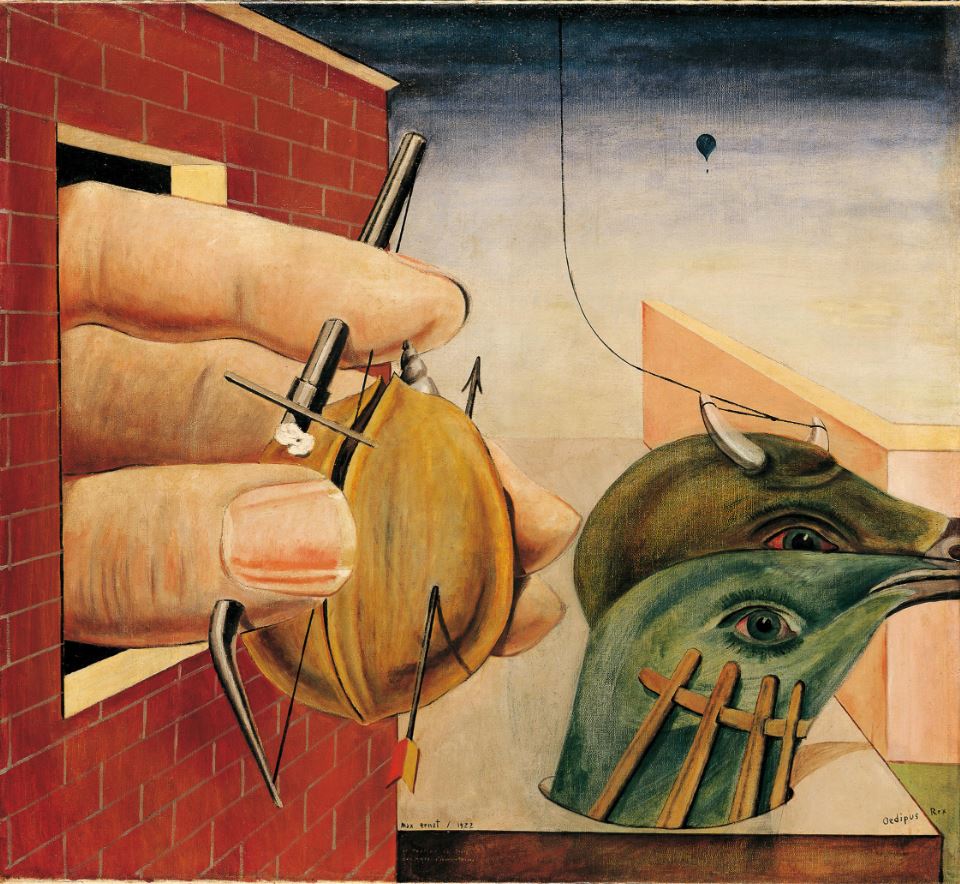Exhibitions
Max Ernst: between art and cinema
An approach to one of the fundamental figures of the 20th century at the Círculo de Bellas Artes.

The border between art and cinema, if there is one, is completely blurred in the exhibition hosted by the Círculo de Bellas Artes : 'Max Ernst: Surrealismo, Arte y Cine'. It is an immersion in the life and work of one of the great masters of the European avant-garde, and it does so through the connection of Ernst's work with the seventh art. Curated by Martina Mazzotta , art historian, writer and researcher at The Warburg Institute from London, and Jürgen Pech , former curator of the Max Ernst de Brühl museum, the exhibition explores a hitherto little-discussed relationship between the artist and the world of cinema, a dialogue that is still present.
The Círculo de Bellas Artes thus joins the celebration of the centenary of the surrealist manifesto with this exhibition which can be visited until May and which collects the artistic legacy of Max Ernst (Brühl, 1891- Paris, 1976), positioning him as a fundamental figure in the creation of the visual language that transformed the 20th century.

Ernst was a painter, sculptor, draftsman, graphic artist, poet and art theorist, and he never stopped experimenting. In recent years, curators around the world have delved into Ernst's lesser-known works and creations, revealing new perspectives both historical and theoretical. The painter thus presents himself as an interdisciplinary intellectual, constantly inspired by the great masters of the past, but also as an innovative creator who expanded the possibilities of the art of his time. The exhibition is made up of almost 400 pieces, including paintings, sculptures, collages, frottages, illustrated books, photographs and films, articulated in such a way as to create a network of connections and parallels in order to show its constant influence on cinema , surrealism and the visual culture of much of the 20th century.

These influences can already be perceived with the two paintings at the beginning of the exhibition: a walnut pierced by irons and a pierced eye, dreamlike and disturbing elements, both works dated from 1922, two years before the publication of the Surrealist Manifesto and seven years before Buñuel's Un perro andaluz.
This type of assemblage between film and painting is not just an accidental fact, but a constant throughout his career, and is one of the most interesting points of the exhibition, which manages to draw these parallels between painting and film , establishing direct communication between the two disciplines. Ernst, who began as a Dadaist and became integrated into Surrealism, took advantage of his connection with cinema to expand the possibilities of his visual language. He was an active participant in the evolution of cinema, beyond being an actor, he was a member of cinematographic juries and even a designer of awards. In the exhibition you can also see his links with figures such as Henri Gruel, Jan Švankmajer and Roman Polanski , as well as a selection of films that were inspired by his work, such as the shorts of Buñuel and Dalí , or the films by Hans Richter, Peter Schamoni and Jean Desvilles .

A pioneer of the frottage technique, the organic and biomorphic forms he created with this technique inspired a whole universe of characters and situations that recalled fossils and were closely linked to a dream world. But perhaps most interesting of all is the way the exhibition invites us to rethink the life of an artist who not only experimented with techniques and formats, but lived in a context of constant experimentation and transformation. His work, very powerful visually, marked a stage of surrealism and also contemporary visual culture, shaping a fundamental critical thinking of modernity.
Ultimately, 'Max Ernst: Surrealismo, Arte y Cine' offers a rare insight into the artist and opens a window into how film and art have influenced each other over the decades, creating a symbiotic relationship still valid Max Ernst was a painter all his life, but he became a creator of multiple realities, a figure who grew through experimentation and creative freedom.
 'Homme', Max Ernst (1960). © Museu Max Ernst, Brühl
'Homme', Max Ernst (1960). © Museu Max Ernst, Brühl









